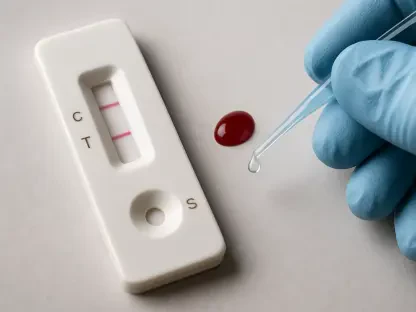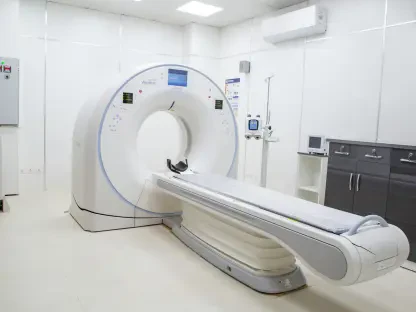The Medical Smart Rings Market is rapidly carving out a significant niche within the wearable technology sector, revolutionizing how health and wellness are monitored on a daily basis. These cutting-edge, compact devices are engineered to track critical health metrics such as heart rate, blood oxygen levels, body temperature, sleep patterns, and physical activity in real-time, delivering valuable insights to both individual users and healthcare professionals. A comprehensive report by InsightAce Analytic Pvt. Ltd. projects an astonishing trajectory for this market, estimating a rise from a valuation of US$ 301.3 million in 2023 to an impressive US$ 1,409.1 million by 2031, reflecting a robust compound annual growth rate (CAGR) of 21.5% over the forecast period from 2024 to 2031. This explosive growth underscores the increasing reliance on innovative wearables to facilitate proactive health management and enhance clinical decision-making in an era where personal wellness is paramount.
Surging Popularity and Technological Innovation
The escalating demand for continuous health monitoring solutions is a driving force behind the burgeoning popularity of medical smart rings, fueled by heightened global health awareness and a rising incidence of chronic diseases. These devices, with their sleek and unobtrusive design, cater to a diverse audience ranging from fitness enthusiasts to patients requiring consistent remote monitoring. Unlike bulkier traditional health tools, smart rings offer a seamless way to keep tabs on vital signs, empowering users to take control of their well-being while providing healthcare providers with essential data to improve patient outcomes. Their transformative potential lies in bridging the gap between personal health management and professional medical care, making them a cornerstone of modern preventive healthcare strategies that prioritize early detection and ongoing monitoring to mitigate health risks.
Technological advancements in sensor capabilities have significantly elevated the functionality of medical smart rings, positioning them as multifunctional tools for a variety of applications. From managing chronic conditions to tracking fitness progress and supporting elderly care, these devices are becoming indispensable across multiple domains. Their growing integration into corporate wellness initiatives and research institutions further highlights their versatility and broad acceptance. As sensor technology continues to evolve, the accuracy and range of health metrics these rings can monitor are expanding, promising even greater utility. This trend not only enhances the user experience by offering more comprehensive health insights but also drives market growth by attracting new demographics and sectors seeking innovative solutions for health and wellness challenges.
Key Market Drivers and Persistent Challenges
One of the primary catalysts propelling the Medical Smart Rings Market forward is the widespread adoption of wearable technology for health and fitness tracking among consumers globally. The appeal of these devices lies in their elegant design, user-friendly interface, and seamless integration with mobile applications and cloud-based systems, which collectively enhance data accessibility and management. This connectivity allows users to effortlessly monitor their health metrics and share vital information with healthcare providers, fostering a more engaged and informed approach to personal wellness. As a result, smart rings have become a preferred choice for individuals looking to maintain a proactive stance on health without the inconvenience of cumbersome equipment, significantly boosting their market penetration.
Despite the promising growth, the market encounters notable obstacles, particularly with limited battery life due to the inherently small size of smart rings, which constrains battery capacity. For users requiring uninterrupted monitoring over extended periods, this limitation can be a significant drawback, impacting overall satisfaction and usability. Manufacturers are actively addressing this challenge by investing in energy-efficient battery designs and developing portable charging solutions to extend operational duration. Continuous research and development efforts are underway to mitigate this issue, with innovations poised to improve device reliability. Overcoming such technical hurdles is critical to maintaining consumer trust and ensuring the sustained upward trajectory of this dynamic market, as functionality remains a key determinant of adoption rates.
Regional Dominance and Emerging Opportunities
North America stands at the forefront of the Medical Smart Rings Market, driven by its swift embrace of advanced wearable health technologies and a cultural inclination toward cutting-edge healthcare solutions. The region’s focus on preventive care and chronic disease management has fueled a strong demand for health-focused wearables, positioning it to retain a substantial revenue share in the coming years. Supportive healthcare infrastructure and high consumer awareness further amplify market expansion, making North America a benchmark for innovation and adoption in this sector. This leadership reflects a broader trend of integrating technology into everyday health practices, setting a standard for other regions to follow as they develop their own markets for wearable health solutions.
Europe also emerges as a significant contender, with its robust emphasis on research and development in wearable technology driving market growth through product innovation. This focus not only enhances patient outcomes but also improves operational efficiency within healthcare systems, establishing Europe as a key player globally. Meanwhile, regions like Asia-Pacific, Latin America, and the Middle East & Africa are showing promising potential as awareness and accessibility increase. The disparity in adoption rates suggests that while North America and Europe currently lead, strategic efforts to enhance affordability and education in emerging markets could unlock substantial growth opportunities, broadening the global reach of medical smart rings and fostering a more inclusive health technology landscape.
Future Outlook and Strategic Implications
Reflecting on the trajectory of the Medical Smart Rings Market, it has become evident that these devices have already started reshaping the landscape of personal and clinical healthcare with their blend of convenience and innovation. The remarkable growth projected at a CAGR of 21.5% through 2031 highlights a pivotal shift toward data-driven health management that has gained momentum in recent years. As challenges like battery life are addressed through persistent technological advancements, the market has laid a strong foundation for sustained expansion, particularly in regions with advanced healthcare frameworks.
Looking ahead, stakeholders should prioritize strategies that enhance device functionality and accessibility to capitalize on this momentum. Investing in user education and partnerships with healthcare providers can further integrate smart rings into routine care, while targeted initiatives in emerging markets could bridge adoption gaps. The future of medical smart rings lies in their ability to evolve as indispensable tools for proactive wellness, offering a glimpse into a more connected and personalized approach to health that promises to redefine global healthcare standards.









